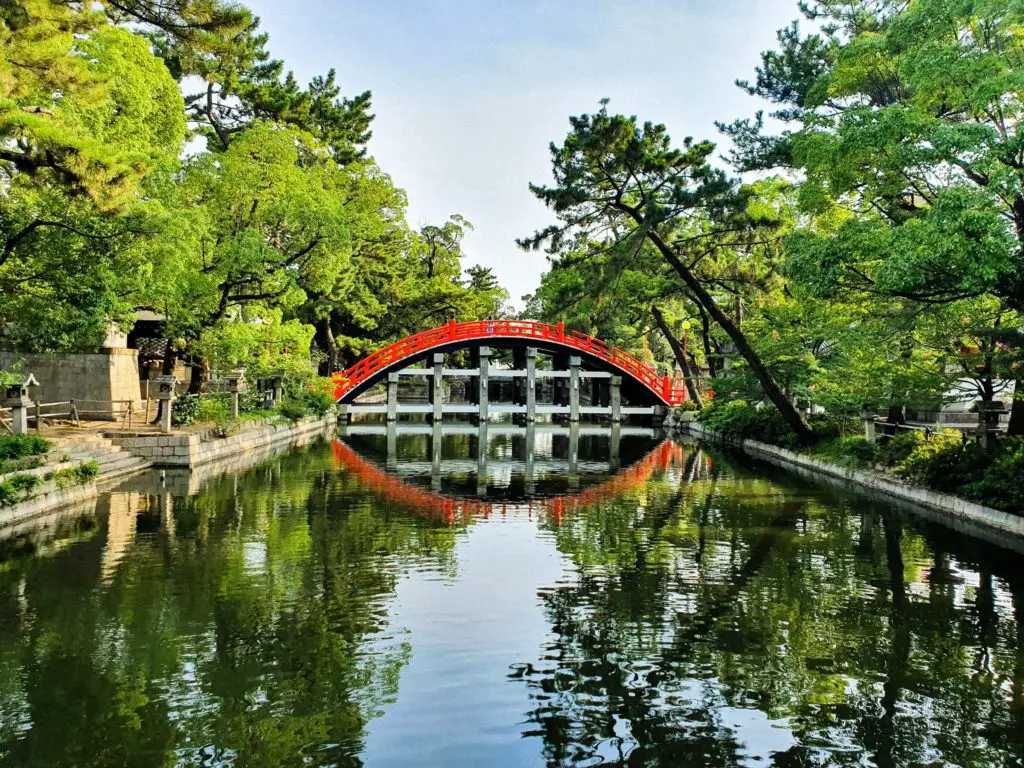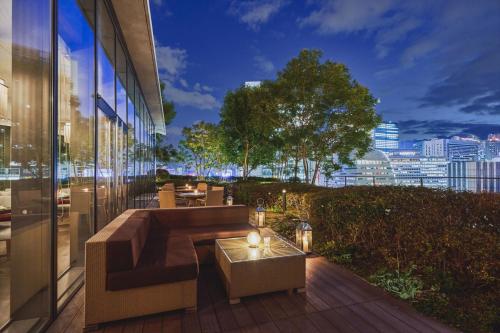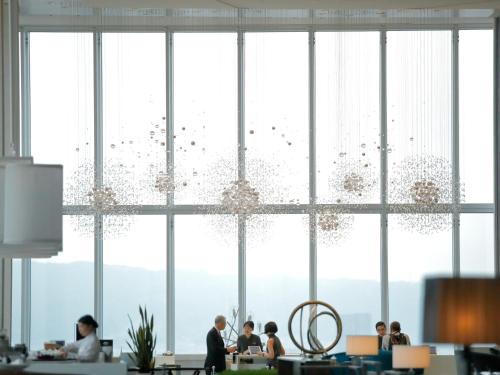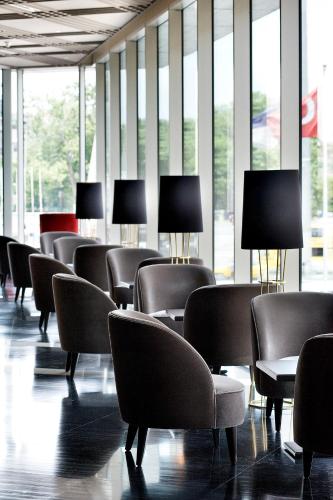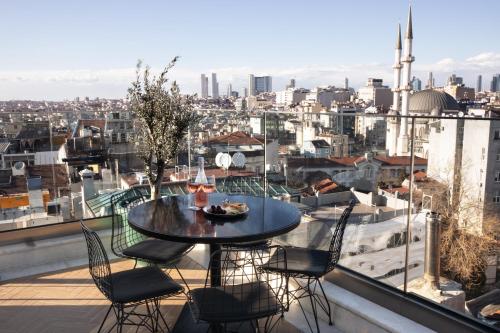1 Day In Lisbon: The Best Highlights In One Day
So, you have just landed in Lisbon and have no idea what to do? Fret not! Our 1 day in Lisbon gives you a bird’s eyes view of the city from two lookout points while visiting the historical landmarks.
Did you know Lisbon was a vital transit city that saved many lives during World War 2? Ian Fleming found inspiration to write Casino Royale from the Estoril Casino which he frequented during his spy days. The highlight of our day trip to Lisbon are:
- Miradouro da Graca
- Castelo de Sao Jorge
- Lisbon Cathedral
- Praca do Comercio
- Cais das Columnas
A Cidade das Luzes está chamando! which means The City of Lights is calling!
Disclaimer: Some of the links here are my affiliate links and I may earn if you click on them, at no extra cost to you. Please read my Disclaimer Policy for more information. I hope you find the information here helpful! Thank you!
Where is Lisbon?
Lisbon is located at the mouth of the Tagus River and is the westernmost capital city in Continental Europe. Legends mention that the city was founded by the mythical hero Ulysses.
Lisbon has been and continues to be a popular tourist destination with tourist neighborhoods being Alfama, Pombaline Lower Town, and Bairro Alto. Its famous avenues include Avenida da Liberdade and Avenida da Republica.
The city is home to two UNESCO World Heritage Sites, the Belem Tower, and the Jeronimos Monastery. However, what we loved about the city was that despite being a modern city, the 19th-century vibe remains.
From striking balconies and vistas to fish vendors who carry on the tradition of their forefathers, Lisbon is a city that has to be on your bucket list.
Visa Requirements
The Ministry of Foreign Affairs expedites the visa for those traveling to Portugal. There are two types of visa categories available. The first is the short-stay Schengen Visa and the other is the National Visa for longer stays.
To determine if you need a visa to enter Portugal, check the Diplomatic Portal for more information on the visa types, visa fees, and the documents required for visa application.
Or, you can apply for a visa through iVisa Portugal which assists with the Health Declaration and the Portugal Passenger Card.
How do you get around Lisbon?
Lisbon is a pedestrian-friendly city that also has an excellent public transportation system that takes you through the major tourist sites in the city. This means that you can save money by renting a car and taking that adventure of exploring the city on foot.
Walking
This is the best way to get around Lisbon is by foot, especially if you are staying in Baixa, Chiado, and Rossio. Before you start walking the city, make sure you have a good pair of walking shoes and good stamina. The roads in Lisbon are steep and can be challenging.
Tram
There are about 60 trams in Lisbon that travel along 5 routes within the city. The fare for a single-ride ticket costs €3 ($3.25) and is always crowded during peak times. The most famous tram is Tram 28 while Tram 15 is the easiest way to reach Belem.
Metro
The other best way to get around Lisbon is by using the Metro. Lisbon’s Metro has four lines that have 55 stations. A more detailed guide on the metro is on the MetroLisboa webpage which highlights the routes, ticket prices, and service conditions of each line.
Rideshare
There are three types of rideshare services available in Lisbon. These are Uber, Bolt, and Free Now. While rideshare is much cheaper than a taxi, do note that the drivers are not always familiar with the route or the English language.
Also, rideshare drivers are required to display the letters TVDE sticker on their windshield. If you are taking rideshare, look out for the sticker.
Viva Viagem and Navegante Cards
If you decide to use public transportation as your main mode of transport, it would be wise to invest in either the Viva Viagem or Navegante Cards. These cards use a “zapping” system as you tag in at your entry station and at the end of your trip, you tag out at your exit station.
You can purchase the cards at the automated vending machines at any train or metro station in the city. Or, you can purchase a Lisbon Card which can be used on buses, trams, and metros. You also have free entry to 39 museums and historical landmarks in the city.
Related Posts:
How can I spend 24 hours in Lisbon?
Miradouro da Graça
The first of our 1 day in Lisbon is Miradouro da Graça. Under the shade of pine trees next to the Graça church, Lisbon’s oldest church. Look out for the bust of Sophia de Mello Breyner Andresen, a poet who admired the city’s viewpoint while writing her poems.
This place has some of the best views of the 25th April Bridge, Alfama, Downtown, Mouraria, and the Castle. To get here, you can either walk up from Alfama or Sao Jorge’s Castle or hop onto Tram 28 and get down at the Graça stop.
Alfama
Photo by Nik Guiney on Unsplash
The second of our 1 day in Lisbon is Alfama. This is the oldest district in Lisbon and is a 450-meter or a 6-minute walk from Miradouro da Graça. Interestingly, this neighborhood was not affected by the 1755 earthquake that destroyed Lisbon.
Hence, the buildings, the cobbled streets, the squares, and the alleys are just as how they were centuries ago. All you need here is a camera and plenty of stamina. Stop by the São Vicente de Fora Monastery which is home to the most extensive collection of baroque decorative tiles.
After that, head to the National Pantheon which is the oldest monument completed in Portugal. While the dome has some of the best views of Alfama, its interiors hold the tombs and cenotaphs of Portugal’s famous figures.
Castelo de Sao Jorge
The third of our 1 day in Lisbon is Castelo de Sao Jorge or the Castle of Sao Jorge. The castle is an easy 6-minute walk from Alfama. The hill on which the castle sits is historically significant as the earliest fortifications on the site date back to the 1st century.
This castle has Lisbon’s history etched on its walls. From the royal quarters to the fortified battlements and sea-facing views that inspired global exploration, you can easily spend an hour or two here.
Is Lisbon Castle free?
No, entry to the castle is not free. Adults pay an entrance fee of €10 ($10) while students pay a fee of €5 ($5) while senior citizens above the age of 65 years and disabled guests pay a fee of €8.50 ($8.50). Children below the age of 12 years enter for free.
Is Sao Jorge Castle included in Lisboa Card?
No, the Lisboa Card is no longer valid at Sao Jorge Castle. You would need to buy tickets from the ticket counter. Free guided tours of the archaeological center of the castle and dark chambers are available in Portuguese, Spanish, and English.
Miradouro das Portas do Sol
The fourth of our 1 day in Lisbon is Miradouro das Portas do Sol. This scenic viewpoint is about 350 meters or a 5-minute walk from Sao Jorge Castle. The viewpoint is essentially a large balcony that overlooks the Alfama district.
When translated, the name means “Gate of the Sun” as this place is the best place to watch the sunrise. You know you have reached the viewpoint when you see a statue of St Vincent, the patron saint of Lisbon welcoming you to this beautiful spot.
Lisbon Cathedral
The fifth of our 1 day in Lisbon is Lisbon Cathedral or the Metropolitan Cathedral of St Mary Major. This cathedral is about 750 meters or a 10-minute walk from the Miradouro das Portas do Sol.
Or, you can hop on Tram 28E from the Portas do Sol to the Se Cathedral stop which is just one station away. The earliest building on site was completed during the 12th century and throughout the centuries, the cathedral has survived earthquakes, modification, and restoration.
While there is no entrance fee to visit the cathedral, there is an entry fee of €5 for adults, €3 for children between 7 to 12 years, and free for children below 6 years of age to visit the Coro Alto, a balcony between the bell towers, a visit to the Sé Treasure Museum, and a tour of the church’s naves and ambulatory.
Praça do Comércio
The sixth of our 1 day in Lisbon is Praça do Comércio or Commerce Plaza. This plaza is about 550 meters or a 7-minute walk from the Lisbon Cathedral. The landmark here is the Augusta Rua Triumphal Arch which was built to commemorate Lisbon’s reconstruction after the 1755 earthquake.
At the center of the square is the statue of José I who is mounted on a horse. While Portugal’s wealth once passed through this path, it is now filled with pedestrians as they make their way to Martinho do Arcada, the oldest restaurant in Lisbon.
Cais das Colunas
The seventh and last of our 1 day in Lisbon is Cais das Colunas or the “Columns Wharf”. These columns are about 170 meters or an easy 2-minute walk from Praça do Comércio. The columns were rebuilt in 1755 and once functioned as the “Noble Gateway” as this wharf was exclusively for royalty and noblemen.
The two columns were inspired by the columns at Solomon’s Temple and represent wisdom and devotion. This was our perfect end to the day as we watched the sunset over the horizon and ended our 1 day in Lisbon.
What are the best hotels to stay in Lisbon?
Corpo Santo Lisbon Historical Hotel

Our first choice hotel for 1 day in Lisbon is the Corpo Santo Lisbon Historical Hotel. This 75-room hotel has 8 suites and is located in the heart of Cais do Sodré. What I loved about this hotel was the section of Fernandina Wall that is remarkably preserved.
At Corpo Santo, all rooms are unique with the common theme of brown and beige that reflects Lisbon’s serenity and peace. All rooms have free WiFi, a minibar, a safety deposit box, and a Nespresso coffee machine.
Some positive reviews mention the convenient location which is near to the train and metro station. Guests loved the clean and cozy room, the impeccable service, and the welcoming staff.
Avenida Palace

Our second choice hotel for 1 day in Lisbon is the Avenida Palace. This 82-room hotel is a 5-star hotel that is close to Bairro Alto and Chiado which means that this is the place to stay if you want to be close to Lisbon’s nightlife.
All rooms are soundproofed and come with free WiFi, marble bathrooms, and hairdryers. Interconnecting rooms are available while the Junior Suites come with a living room and dining area.
Some positive reviews mention the lovely breakfast, helpful and cheerful staff, and the convenient location which is near the train and metro stations. What we loved about it was the staff who always greeted us with a smile, any time of the day.
Four Seasons Ritz

Our third choice hotel for 1 day in Lisbon is the Four Seasons Ritz, a 282-room hotel that is in the heart of Lisbon. What we loved was the contrast of the rolling hills against the updated Louis XVI-style furniture.
Some positive reviews mention the grand luxurious feel of the hotel with a fully equipped gym and a rooftop running track. While the hotel’s location is far from town, the good breakfast and professional staff make up for it.
What I loved was the perfect blend between modern, classic, and luxury and the clean and comfortable rooms. This place is a must-stay when in Lisbon.
Hyatt Regency Lisbon

Our fourth choice hotel for 1 day in Lisbon is Hyatt Regency Lisbon. This 204-room hotel is located along the Tagus River and is just 10 minutes away from the historic city center. All rooms come with a safety deposit box, free WiFi, an iron with an ironing board, and a work desk.
Sofitel Lisbon Liberdade

Our fifth choice hotel for 1 day in Lisbon is Sofitel Lisbon Liberdade. This 163-room hotel is located in Baixa and is close to Rossio, Praca do Comercio, and luxury boutiques and museums.
Some positive reviews mention the excellent location, efficient staff, and clean rooms. Guests also loved the breakfast spread, the comfortable beds, and the helpful and polite reception staff.
Frequently Asked Questions (FAQs) on Lisbon
These are answers to additional questions which you may have about Lisbon. We hope you find this information helpful.
The best months to visit Lisbon is during the spring months from March to May and during the autumn months of September and October. This shoulder season is perfect for sightseeing as the weather is pleasant and there are fewer tourists.
The peak season is from June to August which means blazing temperatures, overcrowded tourist sights, and expensive flights and accommodations. This is the best time to visit the beaches of Lisbon. However, book your flights and accommodation at least 6 months in advance.
The winter months are from November to February which brings rainy days. These months are also the wettest in Lisbon. If you are a budget traveler looking for cheap accommodation and fewer crowds, these are the months to visit Lisbon.
The fastest option from Lisbon Airport to the city center is to hire a private transfer between the airport and the city center. The second fastest option is via the Lisbon Metro where a single ticket costs €1.45 (US$ 1.50) per person.
The third way to get to the city from the airport is by using a taxi. It is best to purchase a pre-paid ticket to avoid last-minute surprises once you step into the taxi. To get to the city center, the taxi fare should not cost more than € 20 (US$ 20.90).
Yes, the people in Lisbon speak good English, especially among the younger generation. The older generation speaks English which is enough to get by. You would not have any problems conversing with local guides or those in the tourism industry.
No, you do not need a car in Lisbon as the city is walkable. Public transportation is easily accessible and cheap, clean, and modern. The schedules for the metro, trains, and trams are punctual. If all else fails, take the taxis which are cheaper than in any other European city.
Yes, Uber is available in Lisbon. Uber is also available in Porto and Algarve. And, yes, you can arrange an Uber from Lisbon Airport. The pick-up area is at the Departure area of Terminal 1, near the Kiss & Fly car park.
Yes, you can drink tap water in Lisbon. The water in Lisbon may taste different from the water you are used to as it has high mineral content and chlorine which is added during treatment.
Lisbon is about 15 miles from the sea which means that there are plenty of beaches in and around the city to explore. You do not need a car as these beaches are accessible via public transportation.
The closest beach to a train station is the Praia do Tamariz which is also kid-friendly. The waters are calm and clean. To get here, take a train from the Cais do Sodre station which departs every 20 minutes. The journey is free if you have a Lisbon Card.
Yes, Lisbon does have good nightlife with the Bairro Alto district being the hot spot for nightlife. With over 100 bars, Fado bars, and nightclubs, Lisbon takes vibrant nightlife to the next level.
Yes, Lisbon is worth visiting. Here’s why:
1) Food paradise. From fresh seafood to sweet treats, Lisbon has it all. Do not Lisbon without trying the pastel de nata and the Ginjinha which is Lisbon’s famous drink.
2) Historical landmarks. Lisbon is the second oldest city in the world after Athens. Some historical landmarks in the city include Belem Tower, Castelo de Sao Jorge, and the Lisbon Cathedral.
3) Architectural Marvel. From Gothic churches to Moorish citadels, these buildings tell a story of the past. Look out for the Azulejos or the painted tiles that make the city unique.
4) Street Art City. Lisbon is also one of the street art capitals in Europe meaning you will see street art everywhere.
5) Affordability. Unlike other European cities which may be expensive, Lisbon is relatively cheaper to visit. From booze to accommodations, you will find that Lisbon does not burn a hole in your pocket.
Lisbon is an affordable world-class city that boasts lively nightlife, fresh seafood, and produce with several beaches just a hop away. If you haven’t visited this city, what are you waiting for? All you need is 1 day in Lisbon.
1 Day In Lisbon: The Best Highlights In One Day Read More »

